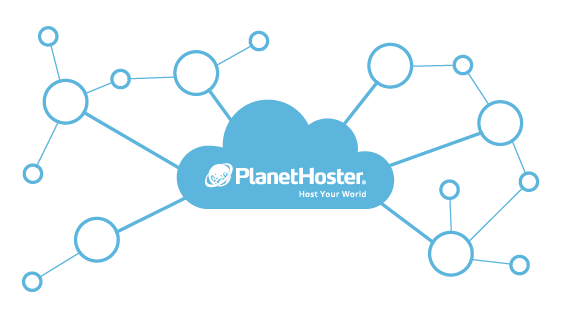According to the results from a McKinsey global survey of senior executives from 1,650 incumbent organizations, there is a unanimous consensus that digital is the future.
Despite the recognition of the need to make “the move” to the cloud and the edge beyond, only 23% of those same executives indicate that they have a digital reinvention strategy. What is perhaps even more noteworthy is that the 2018 IDC (International Data Corporation) report that 80% of the organizations will repatriate their data from public clouds.
The question this raises is “Why”? Why does this disconnect between recognition and realization of the digital promise exist? A question of even greater importance is “How can organizations bridge the gap and make digital real?”
In this article, we will examine more closely the history of the digital revolution, where we are today, and where we need to be in the future.
History: A False Start

There is a saying that those who fail to learn from history are doomed to repeat it. The best way to gain insight into the digital inertia of today is to better understand the early days of cloud technology and the corresponding strategies.
In this regard, the initial release of a ScienceLogic CIO (Chief Information Officer) survey at the FOSE (Federal Office Systems Exposition) conference in Washington in 2011 was perhaps the earliest indication that there were serious and universal reservations regarding the cloud. More specifically, the introduction of the cloud into the US Federal government through Federal CIO Vivek Kundra’s Cloud First policy.
Similar to the McKinsey survey, even though a majority of government agencies identified the three “must move” services to cloud computing, 92% expressed reservations as to the veracity of the technology from the standpoint of performance and service availability.
Beyond the fact that 63% of survey respondents believe that they will require additional resources to make a move to the cloud a successful proposition, other areas of concern included scalability, security, and data recovery. In short, this is the origin of the disconnect between recognition of the digital promise and its practical realization.
The Present: Getting Your Head Out of The Cloud

The results of both the ScienceLogic and McKinsey surveys demonstrate that there has been a modicum of progress in addressing the lingering concerns regarding the implementation of a cloud, i.e., digital strategy.
In this section, we will focus on the three biggest obstacles to digital transformation: the growing talent gap, i.e., resources, security, and the paucity of clean data.
In September 2013, Capgemini estimated that “just a third of the 4.4 million or more IT (Information Technology) jobs created globally in 2015 around big data opportunities will be filled.” Further research shows that this talent gap in recent years has been growing. Without the necessary resources to transform digital vision into tangible action, achieving the desired outcomes of moving not only to the cloud but to the edge will remain elusive. For more information : The Digital Talent Gap Developing Skills for Today’s Digital Organizations
Traditionally, senior corporate executives and board members have listed concerns about the economy and regulatory compliance as the top two issues with which they have to deal. In today’s digitally driven world, there is a shift in focus, especially with companies looking to make a move to the cloud.
An article by the Director of Cyber Security at Cisco referred to a North Carolina State University report that concerns the “rapid speed” of disruptive innovations and new technologies, and how they would “outpace” an organization’s ability to manage risk effectively, now sits at the top of executive agendas. Finding a way to manage the proliferation of access points into an organization’s data and reduce, if not eliminate, the corresponding risks is key to embracing a digital future.
Big data. Moving beyond the Gartner postmodern ERP (Enterprise Resource Planning) era means that there is now much more to the management of the vast seas of data within a global enterprise. Specifically, timely access to relevant data that delivers needed intelligence beyond the cloud to the edge. The challenge: data quality.
In talking about the paucity of “clean data” within her organization, the former CPO (Chief Procurement Officer) for the Scottish government said that most companies do not have the resources and therefore the cycles to cleanse their data. As a result, and even with technological advances such as RPA (Robotic Process Automation) and AI (Artificial Intelligence), extracting meaningful value from data pools is anything but easy.
The Future: Clouds Clearing

In another IDC study, the market intelligence firm indicates that “60%+ of global GDP (Gross Domestic Product) will be digitized by 2022, with growth in every industry driven by digitally-enhanced offerings, operations, and relationships and almost $7 trillion in IT-related spending in 2019-2022.”
IDC then went on to say that “by 2023, 75% of All IT Spending Will Be on 3rd Platform Technologies, as Over 90% of All Enterprises Build ‘Digital Native’ IT Environments to Thrive in the Digital Economy.”
Bold predictions considering the current state of seeming inertia. But, beyond the recognition on the part of senior management that a digital future is inevitable, there must be a shift in mindset to recognize the following:
- “Digital thinking” must be an integral part of every business leader’s skill set and is therefore not the sole responsibility of an organization’s IT leadership.
- Digital transformation is not “confined” to just one part of the enterprise but will impact all areas of an enterprises’ offerings, operations, and relationships.
Given the breadth and depth of digital’s impact, organizations must focus on key areas of graduated transformation including; Network Optimization, the introduction of a Hybrid Multicloud, Distributed Security, and Distributed Data.
As part of the graduated transformation strategy, it would be wise to take a page from Jim Collins’ seminal book Good To Great. Specifically, that there is no big bang or “single event” that will magically transform an enterprise. Instead, an effective strategy that centers on a progressive or cumulative process of smaller events will serve as the building blocks for digital success.